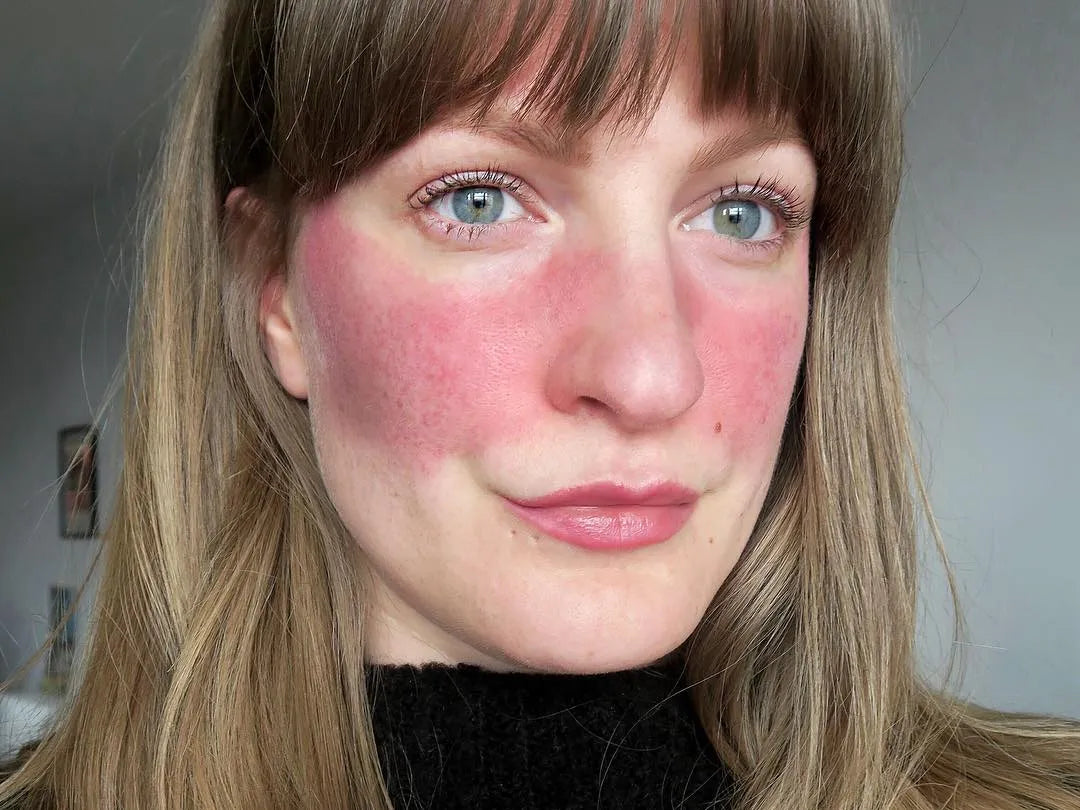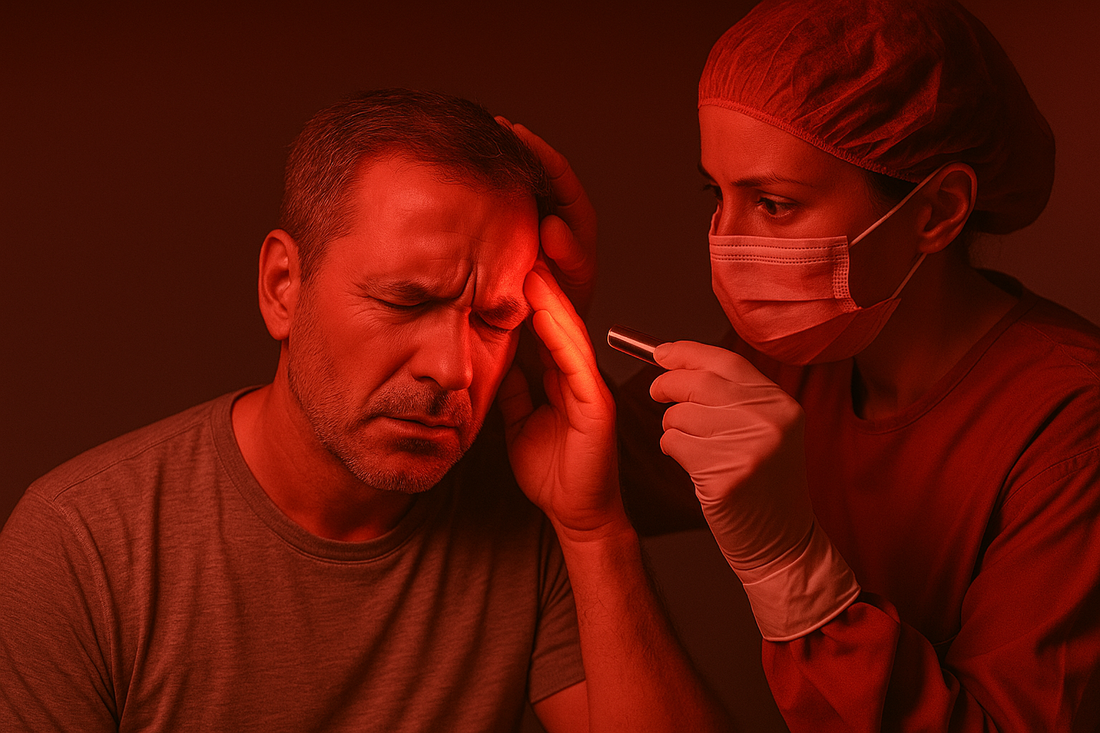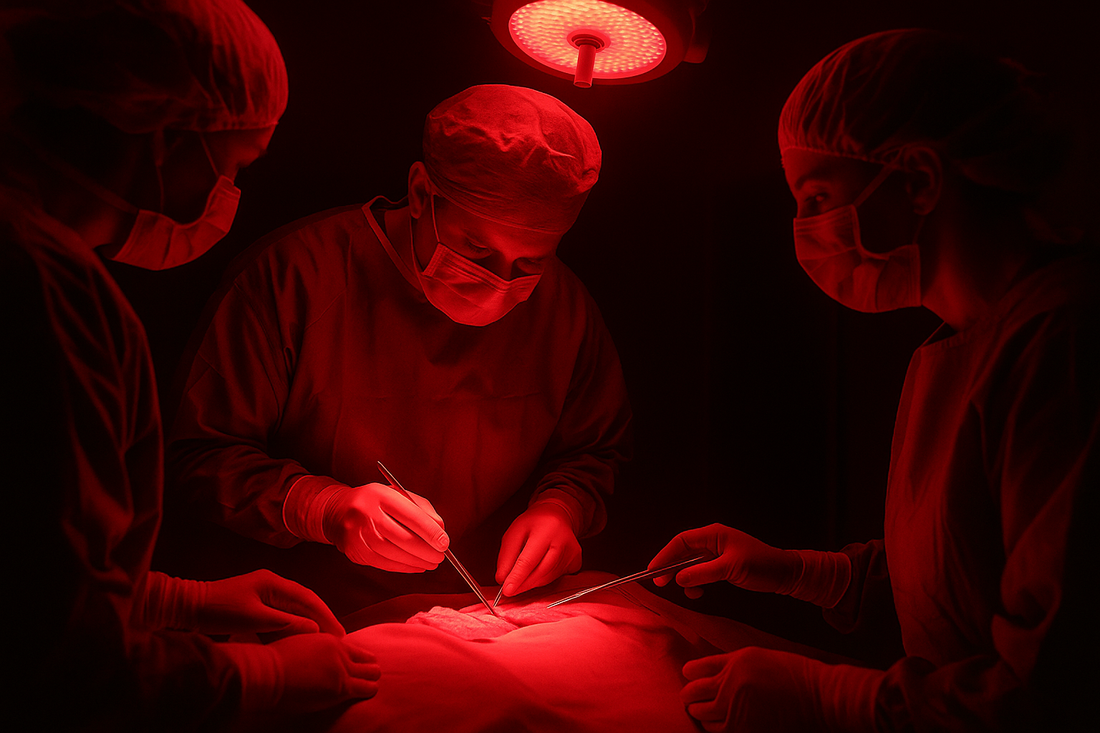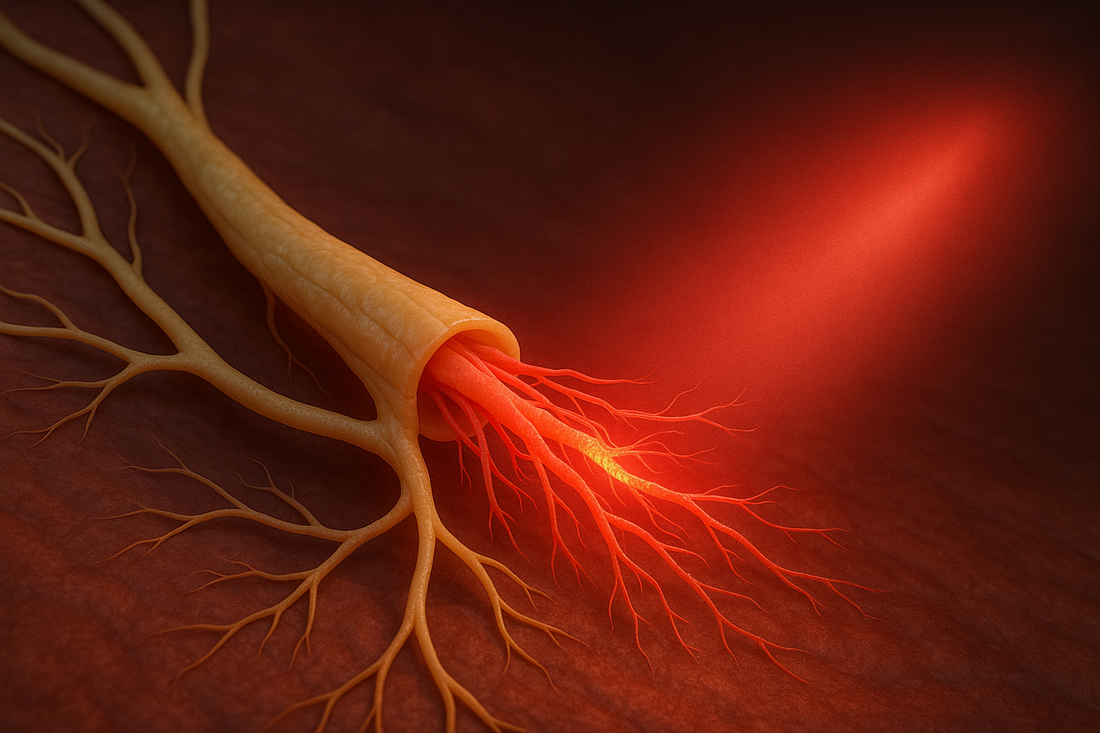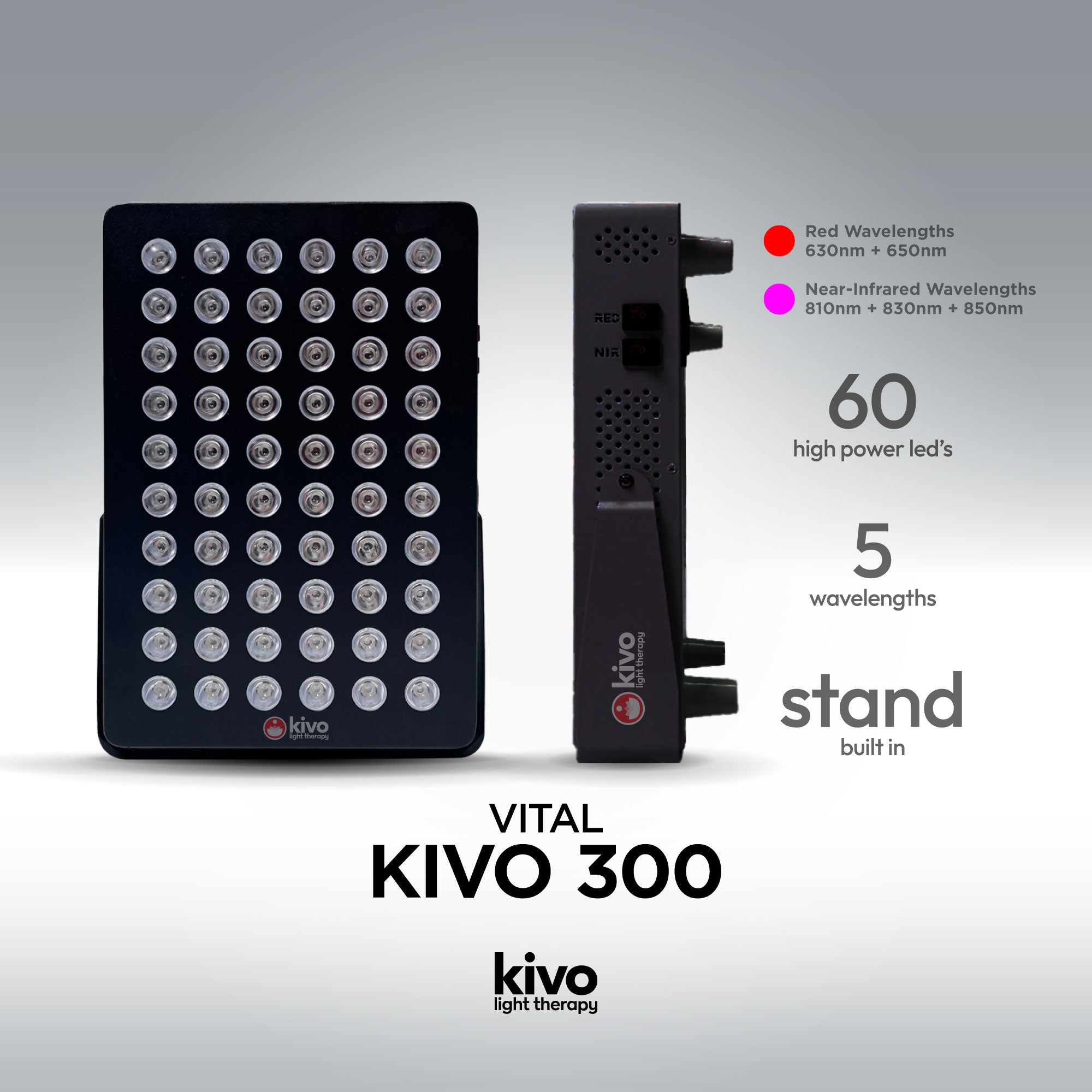Red light therapy (RLT) is gaining recognition for its potential benefits in treating various skin conditions, including rosacea, a chronic skin disorder that primarily affects the face. Characterized by redness, visible blood vessels, and sometimes acne-like breakouts, rosacea can be challenging to manage. In recent years, red light therapy has emerged as a non-invasive option that may alleviate some of the symptoms associated with rosacea.
What is Red Light Therapy?
Red light therapy involves exposing the skin to low levels of red or near-infrared light. This therapy, also known as photobiomodulation or low-level light therapy (LLLT), penetrates the skin at a depth of about 5 millimeters. It is believed to stimulate cellular repair and regeneration, reduce inflammation, and improve circulation. The wavelengths used in RLT typically range between 600 and 850 nanometers, a range that has been shown to have therapeutic effects without causing harm to the skin.
How Red Light Therapy Works
The primary mechanism behind red light therapy is the stimulation of mitochondria, the energy-producing components of cells. When red light penetrates the skin, it enhances mitochondrial function, leading to increased production of adenosine triphosphate (ATP), the energy currency of cells. This boost in cellular energy can accelerate the repair and regeneration of damaged skin cells, reduce inflammation, and promote collagen production.
For conditions like rosacea, where inflammation plays a significant role, the anti-inflammatory effects of red light therapy are particularly valuable. By modulating inflammatory processes, RLT can potentially reduce the redness, swelling, and discomfort associated with rosacea.
Benefits of Red Light Therapy for Rosacea
-
Reduction of Inflammation: One of the primary benefits of red light therapy is its ability to reduce inflammation. Rosacea is often characterized by chronic inflammation, leading to redness and swelling. Studies have shown that red light therapy can decrease pro-inflammatory cytokines, which are signaling molecules that promote inflammation in the body. By reducing these cytokines, RLT may help calm the skin and reduce the visible redness associated with rosacea.
-
Improvement in Skin Barrier Function: The skin barrier is essential for protecting the skin from environmental stressors and preventing moisture loss. In rosacea patients, the skin barrier is often compromised, leading to increased sensitivity and irritation. Red light therapy has been shown to enhance the skin barrier function, helping to restore its integrity and reduce sensitivity.
-
Promotion of Collagen Production: Collagen is a protein that provides structure and elasticity to the skin. Red light therapy has been found to stimulate collagen production, which can improve the skin's texture and firmness. For rosacea patients, increased collagen production may help strengthen the skin and reduce the appearance of fine lines and wrinkles that can accompany the condition.
-
Improvement in Circulation: Improved blood flow is another benefit of red light therapy. By enhancing circulation, RLT can help deliver more oxygen and nutrients to the skin, promoting healing and reducing the appearance of visible blood vessels (telangiectasia) commonly seen in rosacea.
-
Reduction of Facial Redness: A key feature of rosacea is persistent facial redness. Several studies have demonstrated that red light therapy can significantly reduce this redness. For example, a study published in the Journal of Cosmetic and Laser Therapy found that patients treated with red light therapy experienced a significant reduction in facial redness compared to those who received a placebo treatment .
-
Non-Invasive and Safe: Unlike some other treatments for rosacea, such as laser therapy or oral medications, red light therapy is non-invasive and has minimal side effects. Most patients tolerate RLT well, with only mild and temporary side effects, such as slight warmth or redness immediately following treatment.
Clinical Evidence Supporting Red Light Therapy for Rosacea
While red light therapy is still considered an emerging treatment for rosacea, several clinical studies support its efficacy:
-
Study 1: Efficacy of Red Light Therapy in Rosacea Patients: A 2015 study published in the Journal of the American Academy of Dermatology evaluated the effects of red light therapy on 17 patients with rosacea. The study found that RLT significantly reduced erythema (redness) and improved the overall appearance of the skin after just four weeks of treatment .
-
Study 2: Photobiomodulation Therapy in Dermatology: A review published in Lasers in Medical Science explored the use of photobiomodulation therapy, including red light therapy, for various dermatological conditions. The authors concluded that RLT could be a valuable treatment option for inflammatory skin conditions like rosacea due to its anti-inflammatory and wound-healing properties .
-
Study 3: Red Light Therapy for Facial Redness: Another study published in Dermatologic Surgery focused on the effects of red light therapy specifically for facial redness. The results showed that patients experienced a significant reduction in redness, with minimal side effects and high satisfaction rates .
How to Use Red Light Therapy for Rosacea
If you're considering red light therapy for rosacea, it's essential to consult with a dermatologist or healthcare provider first. They can help determine if RLT is suitable for your specific case and guide you on how to use it effectively. Here are some general tips for using red light therapy for rosacea:
-
Choose the Right Device: Red light therapy devices are available for both professional and home use. While professional treatments may offer more powerful and precise results, at-home devices can also be effective if used correctly. Look for devices that emit red or near-infrared light within the 600-850 nm range. Our range of Kivo Red Light Panels or masks have a proven track record for the treatment of Rosacea.
-
Follow a Consistent Treatment Schedule: Consistency is key when using red light therapy for rosacea. Most studies suggest that treatments should be performed several times a week for several weeks to achieve noticeable results. Follow the manufacturer's instructions or your healthcare provider's recommendations for the best outcomes.
-
Combine with Other Treatments: Red light therapy can be used alongside other rosacea treatments, such as topical medications or gentle skincare routines. However, always consult your healthcare provider before combining treatments to avoid potential interactions.
-
Protect Your Skin: Although red light therapy is generally safe, it's essential to protect your skin from excessive sun exposure, which can exacerbate rosacea symptoms. Use a broad-spectrum sunscreen daily and avoid triggers that may worsen your condition.
Potential Limitations and Considerations
While red light therapy shows promise for treating rosacea, it's important to be aware of its limitations:
-
Not a Cure-All: Red light therapy may help manage symptoms, but it is not a cure for rosacea. Patients should continue to follow their prescribed treatment plans and avoid known triggers.
-
Results Vary: The effectiveness of red light therapy can vary from person to person. Some patients may see significant improvements, while others may experience more modest results.
-
Cost: Professional red light therapy sessions can be costly, and at-home devices can also be expensive. However, many patients find the investment worthwhile for the potential benefits.
Red light therapy offers a promising, non-invasive approach to managing rosacea symptoms. By reducing inflammation, improving skin barrier function, and promoting collagen production, RLT can help alleviate the redness, swelling, and discomfort associated with this chronic skin condition. Although more research is needed to fully understand its long-term effects, current clinical evidence supports its use as a complementary treatment for rosacea. Always consult with a healthcare provider before starting red light therapy to ensure it's appropriate for your individual needs.

